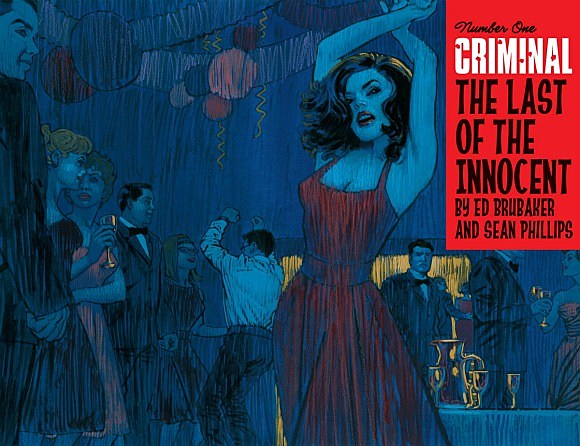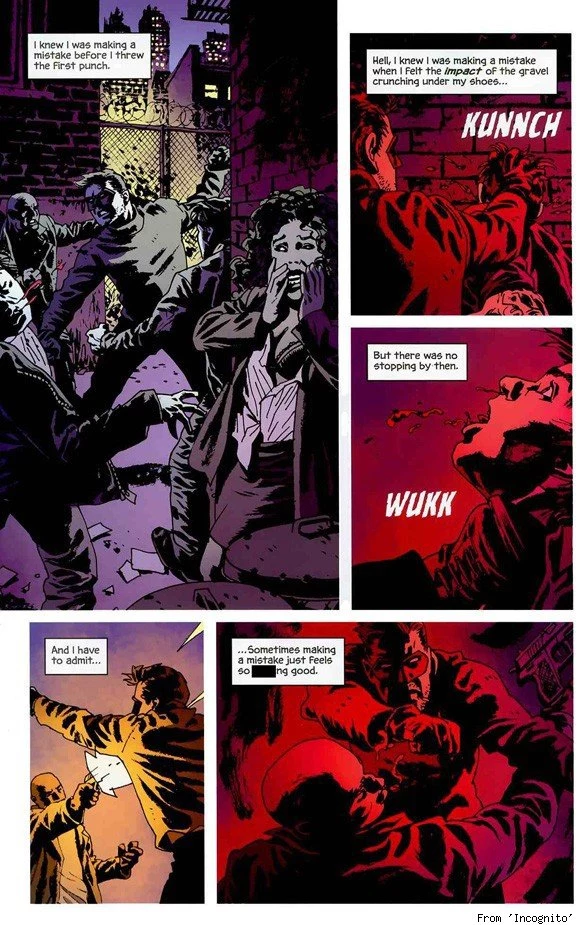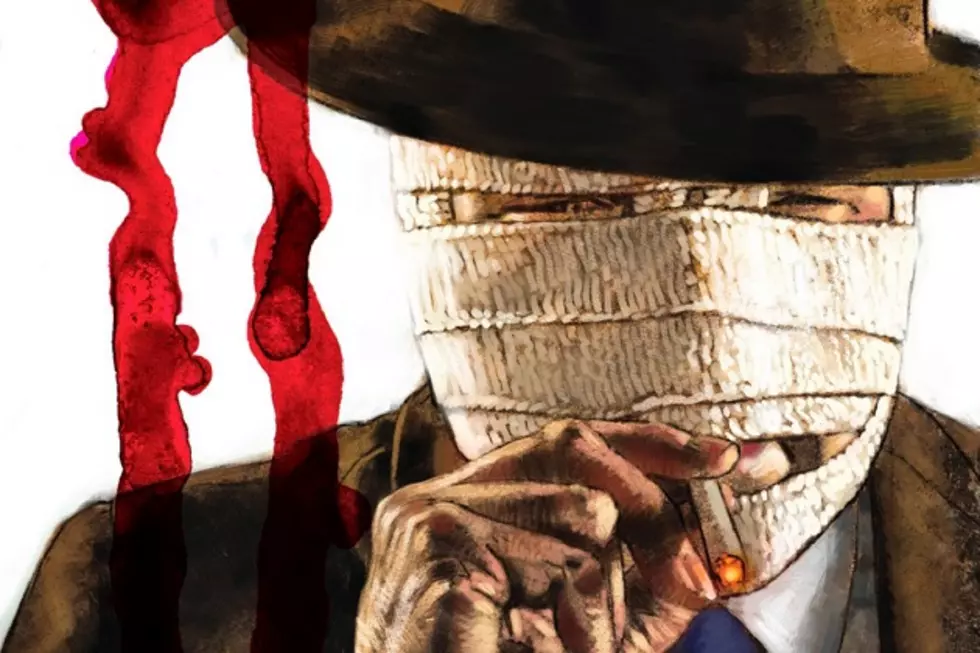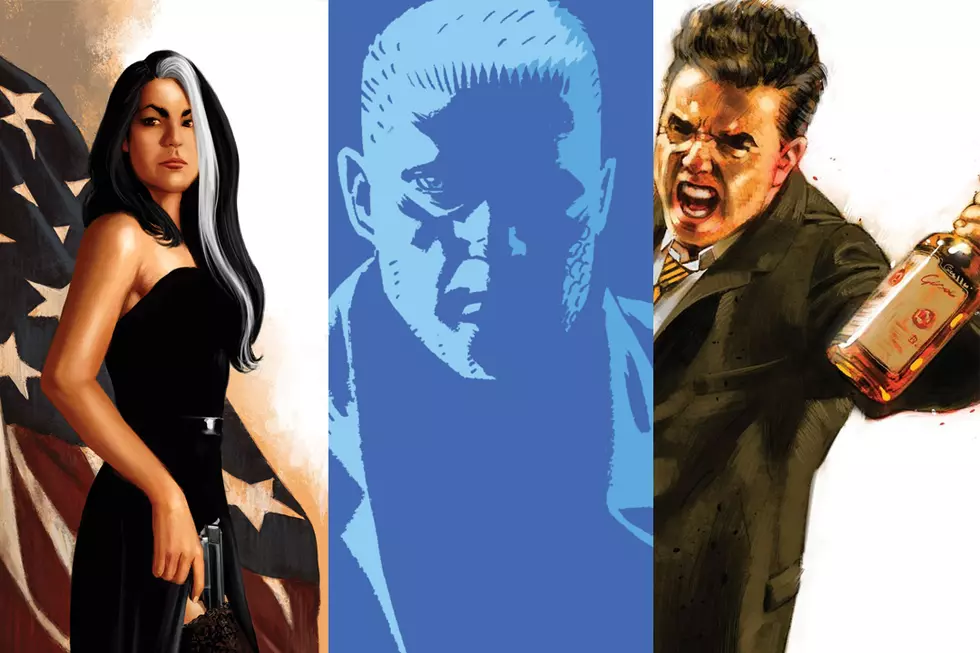
Digital ComicsAlliance Spotlight on Ed Brubaker & Sean Phillips: Everything You Need to Know

I have this theory that Ed Brubaker and Sean Phillips are the best writer/artist team presently working in the mainstream comics industry. They've been collaborating for over ten years now, and at this point they're a well-oiled machine. Brubaker and Phillips' shadowy, hardboiled tales have been my primary method of scratching the crime comics itch for ages now, and the pair's latest work, Fatale (which features colors by Dave Stewart), came out this past week and proved they're just as good as they've ever been.
If you aren't familiar with this duo, today's your lucky day. We're going to use Digital ComicsAlliance to throw a spotlight on some of Brubaker and Phillips' best work and walk you through some significant points in their history at the same time. Light a cigarette in the rain, slide a drink to the nearest femme fatale, and read on.
There was a stretch of time when WildStorm, Jim Lee's baby and now-shuttered DC Comics imprint, was publishing some of the highest quality superhero comics around. This creative renaissance lasted about five years and saw the release of a fistful of classic: Warren Ellis and Bryan Hitch's The Authority was a watershed moment for cape comics; Ellis launched Planetary with John Cassaday and began exploring and rewriting the history of pop culture; Adam Warren's run on Gen13 was about as perfect a teen superhero comic you'll ever read; Joe Casey and Sean Phillips redefined Wildcats for a new era, transforming them from a Covert Action Team and into a dysfunctional family; and then there was Sleeper, an unassuming espionage book from Ed Brubaker and Sean Phillips.

Brubaker and Phillips worked together before Sleeper, but Sleeper was when I really stood up and took notice. It's the point where they went from "a couple dudes making comics" to "Ed Brubaker & Sean Phillips, creative powerhouses." It begins with Tao, a supersmart criminal mastermind, telling Holden, one of his subordinates, that there is a mole in their supervillain organization. He tasks Holden with rooting out the mole and sends him on his way. Tao suspects that the mole is a man called The Nihilist. The twist is that Holden is the mole. He's part of an undercover operation to gather intel on Tao's crew.

Sleeper is about pain. Holden can't feel pain, thanks to a run-in with an alien artifact. Punch him, stab him, shoot him, or hit him with a car and he won't feel a thing. His body stores the pain, and then he can deliver that trauma to other people with a simple touch. That doesn't prevent Holden from being mentally tortured by the actions he has to take as part of his assignment, or the heartache that comes from loving a woman who loves nothing so much as hurting other people.
Brubaker and Phillips explore not just morality and how far a man must go to keep sane in an insane situation. They set up a workable way for supervillains to have hordes of henchmen. They created a criminal hierarchy that was clearly inspired by organized crime, but elevated to a post-human level. Sleeper lasted 24 issues, split into two seasons (each collected in paperbacks from DC), and remains perhaps the best-realized exploration of supervillain life. Holden is thrown into the deep end, and rather than fighting his way out, he only ever seems to manage to sink deeper into the muck. Sleeper is as much a tragedy as it is a spy tale.

Sleeper wrapped up in 2005. Brubaker jumped ship to Marvel during the run of the series and turned Captain America into one of the company's best titles. Phillips drew Marvel Zombies, a series that ended up being hellishly popular. After a brief hiatus, Brubaker and Phillips unleashed their next epic on the world in late 2006: Criminal, courtesy of Marvel's Icon imprint for creator-owned comics. Sleeper was good. Criminal? Criminal was even better.

Rather than charting one man's journey through the underworld, Criminal gave us an all-new look at criminals. Each arc introduced a new cast and took place in a new time period, with the through line being the unnamed city in which the stories took place and the fact that every character we read about was related to another in some way. Some were brothers, others were enemies, and still others were old friends. In Criminal, Brubaker and Phillips created a world that felt lived-in, a world where doomed men and haunted women just wanted to get by.
The first arc of Criminal was called "Coward." It introduced us to Leo (the coward in the title), whom another character says "doesn't just walk away from trouble, he runs." That's how Leo stays alive, out of jail, and healthy. He's an expert thief and pickpocket, but he doesn't take chances. But of course this is a crime comic, so Leo is put into a position where he is forced to take a chance and things go about as wrong as things can possibly go. For us, it's a thrill. For Leo? Well, Leo has a hard time of it.

The next arc of Criminal, "Lawless," stars a man named Tracy Lawless. It begins with these words: "Tracy knew he didn't have to kill him... but some people just deserve to die. He'd learned that a long time ago. And he was old enough now that he didn't doubt his instincts." Tracy is ex-Army and he's back in the city to find out just how and why his little brother Ricky ended up dead. He'd left his brother behind years before, and now he had a chance to finally do right by Ricky. If a lot of people have to die in the process, then so be it.

Criminal continued on, and never managed to be anything less than "good." There were one-shots, shorter arcs, and the transcendant Criminal: The Last of the Innocent, released in the middle of 2011 and among CA's picks for Best Comics of the year.
Between arcs of Criminal, Brubaker and Phillips shifted gears and dipped their toes back into cape comics. Incognito and Incognito: Bad Influences expanded upon the thematic groundwork they laid down in Sleeper. Zack Overkill, star of the series, used to be a supervillain. Now he was in something like witness protection, theoretically reformed, and on pills that dampened his destructive powers. An experiment with recreational drugs made the pills stop working, though, and he soon found himself able to do some major damage once again.

Zack's a misanthrope who wasn't any more fond of his villainous compadres than he was of the superheroes who wanted to put him in jail. One thing leads to another and he finds himself not only helping out SOS, essentially a version of SHIELD, but fighting against his former friends. Brubaker and Phillips clearly love to throw the spotlight on characters who are in way over their head, and Zack is no different. He's lean, he's mean, and he clearly had no idea the level of hell that was going to descend upon his head as soon as he put on a mask again.
At first glance you might think that Incognito was a knock-off of Sleeper, or that these two creators went back to the well again, but you'd be wrong. Although they're both prone to brooding and making bad decisions, and Incognito mines the subject material of not just cape comics but also pulp novels for inspiration, Zack is far from Holden. The two volumes of Incognito are, if anything, probably the meanest books Brubaker and Phillips have done together. People die ugly and no one gets a happy ending, as near as I can tell.

Fatale, the latest effort from Brubaker and Phillips, may be even meaner, judging by the first issue (on sale now). Time will tell, but it's clear that they intend to remain one of the foremost duos in comics today.
What's nice is that you can read all of these comics online thanks to ComiXology, DC, Marvel, and Image Comics. Enjoy.
-Sleeper: Season One
-Sleeper: Season Two
-Criminal (including "Coward" and "Lawless")
-Criminal (2nd Volume) (including a series of one-shots and "Bad Night")
-Criminal: The Sinners
-Criminal: The Last of the Innocent
-Incognito
-Incognito: Bad Influences
-Fatale
More From ComicsAlliance






![Brilliant Art, Tremendous Stories and Daring Creators: The 2016 Eisner Award Winners [SDCC 2016]](http://townsquare.media/site/622/files/2016/07/eisner2016.jpg?w=980&q=75)


